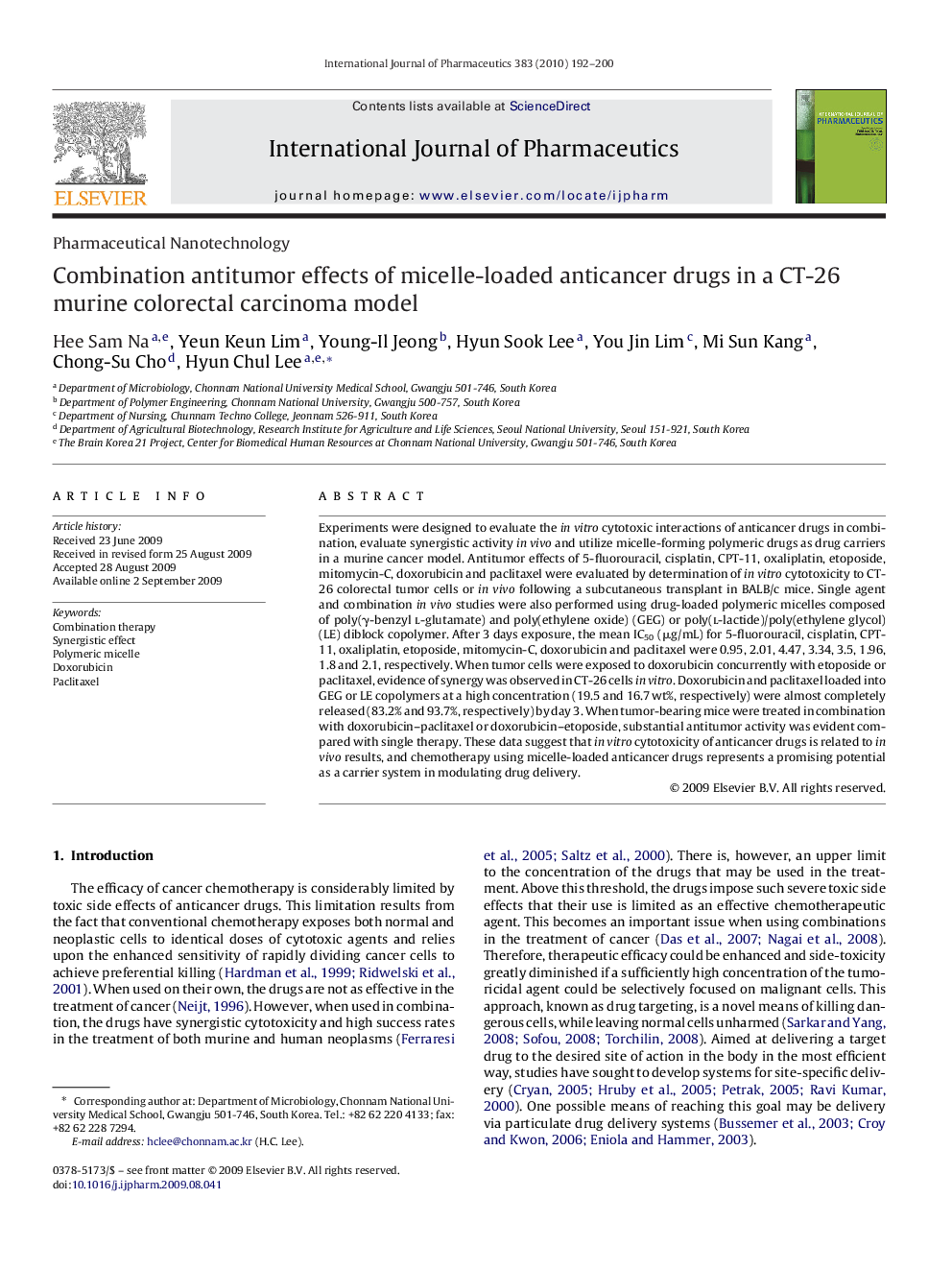| Article ID | Journal | Published Year | Pages | File Type |
|---|---|---|---|---|
| 2504575 | International Journal of Pharmaceutics | 2010 | 9 Pages |
Abstract
Experiments were designed to evaluate the in vitro cytotoxic interactions of anticancer drugs in combination, evaluate synergistic activity in vivo and utilize micelle-forming polymeric drugs as drug carriers in a murine cancer model. Antitumor effects of 5-fluorouracil, cisplatin, CPT-11, oxaliplatin, etoposide, mitomycin-C, doxorubicin and paclitaxel were evaluated by determination of in vitro cytotoxicity to CT-26 colorectal tumor cells or in vivo following a subcutaneous transplant in BALB/c mice. Single agent and combination in vivo studies were also performed using drug-loaded polymeric micelles composed of poly(γ-benzyl l-glutamate) and poly(ethylene oxide) (GEG) or poly(l-lactide)/poly(ethylene glycol) (LE) diblock copolymer. After 3 days exposure, the mean IC50 (μg/mL) for 5-fluorouracil, cisplatin, CPT-11, oxaliplatin, etoposide, mitomycin-C, doxorubicin and paclitaxel were 0.95, 2.01, 4.47, 3.34, 3.5, 1.96, 1.8 and 2.1, respectively. When tumor cells were exposed to doxorubicin concurrently with etoposide or paclitaxel, evidence of synergy was observed in CT-26 cells in vitro. Doxorubicin and paclitaxel loaded into GEG or LE copolymers at a high concentration (19.5 and 16.7 wt%, respectively) were almost completely released (83.2% and 93.7%, respectively) by day 3. When tumor-bearing mice were treated in combination with doxorubicin-paclitaxel or doxorubicin-etoposide, substantial antitumor activity was evident compared with single therapy. These data suggest that in vitro cytotoxicity of anticancer drugs is related to in vivo results, and chemotherapy using micelle-loaded anticancer drugs represents a promising potential as a carrier system in modulating drug delivery.
Related Topics
Health Sciences
Pharmacology, Toxicology and Pharmaceutical Science
Pharmaceutical Science
Authors
Hee Sam Na, Yeun Keun Lim, Young-Il Jeong, Hyun Sook Lee, You Jin Lim, Mi Sun Kang, Chong-Su Cho, Hyun Chul Lee,
